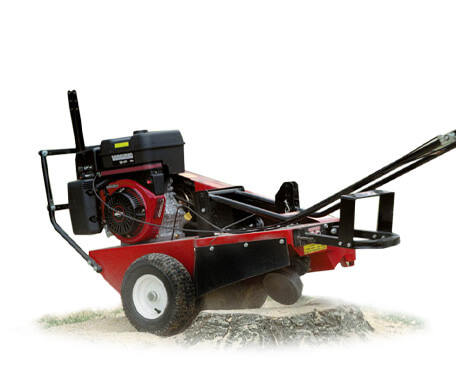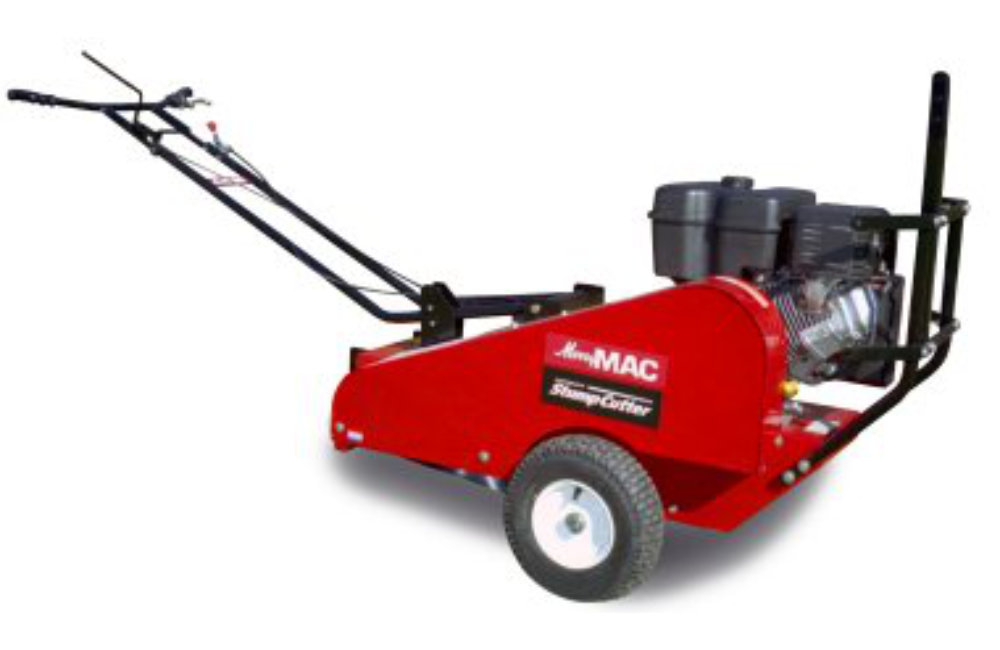Having a perfectly manicured lawn takes a great deal of time and effort. While there are several things in your yard that require maintenance, one of the most daunting tasks is dealing with tree stumps. Although you may have hired an arborist to remove some trees, there is an extra fee for removing the stumps as well. Removing a stump that is 24 inches in diameter or smaller can cost a few hundred dollars. At this price point, removing one stump is not a considerable expense, but dealing with multiple stumps can be extremely expensive. The most cost-effective method for removing stumps in the long term is by buying your own stump cutter. By the end of this article, you will learn how to properly remove a tree stump by using a stump cutter.
Do Tree Stumps Have To Be Removed?
Cutting down a tree can leave your yard looking less organized and defined, which is why most homeowners remove tree stumps. A pesky stump can be an eyesore to your carefully maintained yard, so grinding it down is the best course of action. Tree stumps don’t always have to be removed, but one reason why people normally do it is because tree stumps can promote sucker growth. Sucker growth, also known as suckering sprouts, is when a tree reacts to being wounded by growing more branches. While suckering sprouts are a natural response by the tree after its trunk has been cut down, the sprouts cannot grow into a new tree. The sprouting branches from the tree will constantly have to be cut down, which means the land owner will have to engage in repeated branch pruning, a repetitive and labor-intensive chore. Although some people use sprout growth inhibitors to stunt the production of suckering sprouts, removing a tree stump with a stump cutter guarantees that sprouting will never occur again.
Equipment Used For Stump Cutting
The MacKissic Merry Commercial Stump Cutter makes tree stump removal a breeze. Our stump cutters are capable of grinding down tree stumps that are 25 inches in diameter or smaller. The angled cutter head orientation and the nine carbide teeth provide smooth and efficient stump removal. The handle bars can be adjusted to allow operators of different heights to use the cutter. The handle bars are also adjustable to compensate for the size of the stump. The handle can be flipped so that it can be operated from either the cutter end of the machine for maximum cutter visibility, or from the engine end for tight quarter cutting. If you are interested in more information on our stump cutters, click here to view our product page.
Stump Cutter Use Safety Tips
Here are some important safety tips to remember when operating a stump cutter:
- Make sure to refer to the operator instructions before use.
- Wear protective gear to protect from flying debris.
- Equip eye protection to avoid debris from impairing your vision
- Wear full-length clothes to avoid flying debris from the stump cutter
- Ensure that there is no one entering the jobsite.
- If it is the first time the operator has used a stump cutter, keep a watchful and guiding eye over them
- When using a handlebar stump grinder, don’t try to overpower it by using too much downward force, sweeping too fast, or grinding too deep too quickly.
- When operating a big, tracked walk-behind machine, it’s important to operate on hill slopes with the front end of the machine facing the hill, where the cutting wheel is uphill at all times.
- If you need to readjust the handle height, make sure to turn off the stump cutter before doing so.
The Stump Cutting Process
Before using the stump cutter, there are some preliminary steps to take. The first step when it comes to the stump-cutting process is using a shovel to create a trench to remove any surrounding rocks, as rocks can damage the teeth of the cutter head. Digging around the stump also allows for easier cutting, letting you cut closer to the base of the stump. One final step to take before using the stump cutter is to check the height of the stump. If a stump rises six inches above the ground, use a chainsaw to trim it as close to the ground as possible, as this will save you time and energy when using the stump cutter.
It is now time to cut down the stump. To start, position your cutter wheel over the stump. It is best to use a side-to-side sweeping motion at an inch in depth per pass. A side-to-side motion allows for a clean, uniform cut. Once you have removed the section of the stump that is within your cutting range, release the operation presence lever to stop the cutter. After the cutter teeth have stopped, the stump cutter can now be safely moved into position to continue removing the stump.
Once the stump has been effectively removed, the wood chips can be raked away and used for mulch. Now that the stump has been cut down at least 4 inches below the trench, rake topsoil over the crater. After lightly raking the topsoil, lightly break the top of the soil and spread grass seeds evenly over it. Once the crater has been filled and properly raked, the area must be watered to ensure the growth of the grass seeds.
You now have all that you need to know in order to be a stump cutting master! For more information regarding our stump cutters, please reference our Merry Commercial Stump Cutters page, call toll free at 1-800-348-1117, or send an email to info@mackissic.com.




